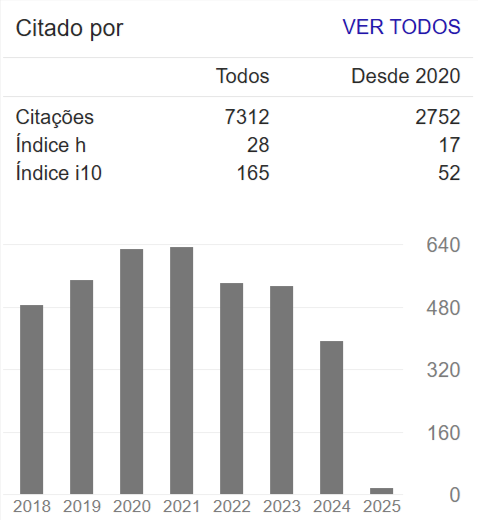Analysis of the structural compartiment of the crystalline basement aquifer system in the municipality of Bagé (RS) based on the use of lineaments (SRTM and magnetic) and hydrogeological data
Abstract
This paper presents the study for defining hydrogeological compartments of the Crystalline Basement Aquifer System, in the municipality of Bagé (RS). For this study, hydrogeological data from 174 tubular wells and lineaments data obtained from SRTM images and aerogeophysical survey were used. To perform the structural assessment of the area morphostructural lineaments on the SRTM images in different scales (1: 1,000,000; 1: 500,000 and 1: 250,000) were traced, as well as structures were identified by analyzing and interpreting aeromagnetic data. These data were used to identifying the existence of structural compartments. Data from the tubular wells were analyzed and used for the hydrogeological characterization and the structural compartments in the studied area. The results indicated the occurrence of five main structures, presenting lengths between 8.62 and 30km. Based on these structures five zones (Z1 to Z5) with distinct characteristics were defined. Zone 1 show the main trends as N80-90E and N60-70E and specific capacity of 0.005 m3/h/m and flow rate of 0.46 m3/h. In Zone 2 the main trends range between N20-30E, N50-60E and N30-40E, with a maximum specific capacity of 6.93 m3/h/m and a maximum flow rate of 16.5 m3/h. In Zone 3, the trends are N50-60E, N40-50E and N30-40E, with a maximum specific capacity of 3 m3/h/m and a maximum flow rate of 20.37 m3/h. In Zone 4, the main trends range from N70-80E to N20-30E, with maximum specific capacity of 2.13 m3/h/m and a maximum flow rate of 12 m3/h. Finally, the main trends in Zone 5 are N70 -80E, N20-30E and N00-10W, with a maximum specific capacity of 1.5 m3/h/m and a maximum flow rate of 30 m3/h. Therefor these results show that the region of the municipality of Bagé is divided into zones presenting different productivity and structural trends, emphasizing that Zone 2 has structures with higher productivity. Thus, the analysis of magnetic and morphostructural lineaments proves to be an important technique for evaluation of structural and hydrogeological compartmentalization of areas with occurrence of fractured aquifers

















